
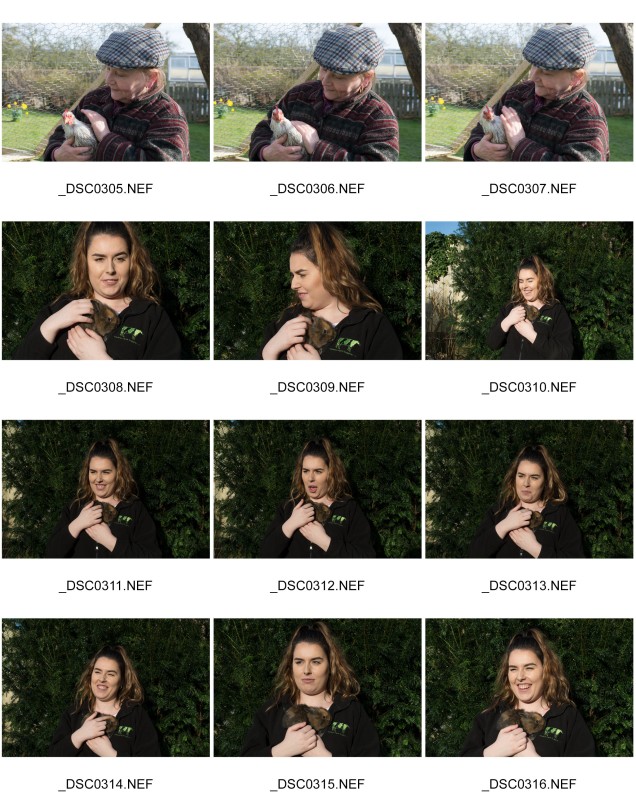
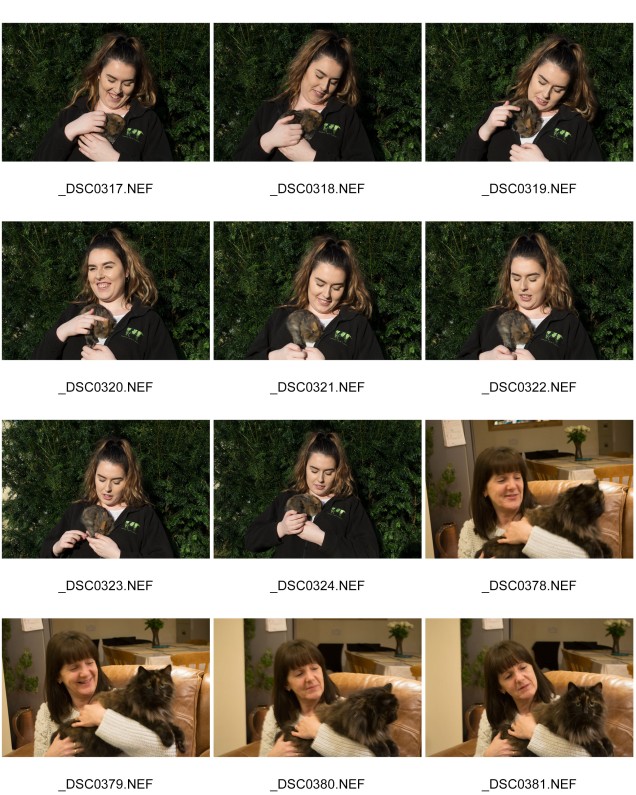

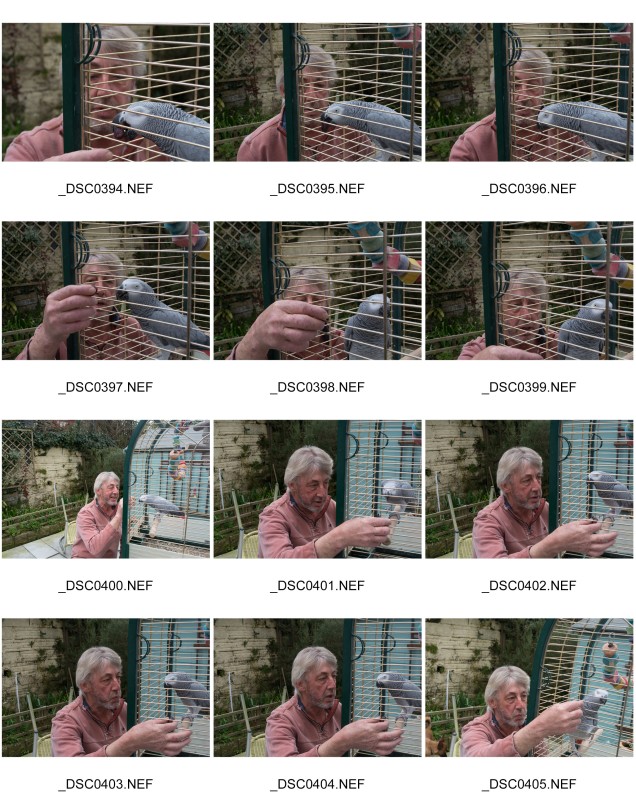
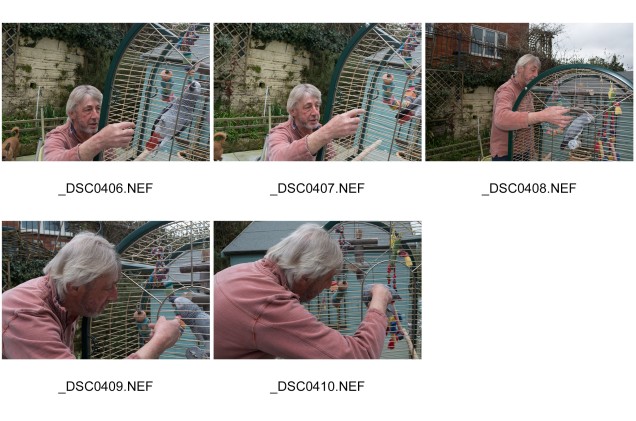
Month: April 2018
Assignment One: The Non-Familiar
Please see the Contact Sheets for this Assignment here and the Research and Planning work here.
The idea behind my final Assignment series is the connection between a human and their pet animal and an insight in to whether those humans and their pets take on aspects of each other’s appearance or identity, whether that be because they are in close quarters to one another daily or through a shared empathy or love for one another.
As you will read in my Journal entries (link in side bar) and in my Research and Planning page I suffer from/am recovering from anxiety, social anxiety in particular, and so for me my comfort zone is somewhat different to what might be considered ‘normal’. In this Assignment I pushed myself out of my comfort zone and it was incredibly uncomfortable but extremely rewarding to see the end results. After I’d done one shoot I became more determined and excited to do the other four. My instinct with the first shoot was to take one photograph and then run away but I, with the help of an assistant, managed to pluck up the courage to take a series of shots to make sure I had a few to choose from with varying angles and camera settings. I even managed to find out a bit about the person and their life, where I felt brave enough I even managed a cup of tea and a chat before/after. All of my five subjects I had never met before, although some of them I had heard of as they were friends of friends. My first subject, Ellie, is the daughter of my partner’s work colleague and my partner knows her so that made an introduction easier for me than approaching someone on the street. I felt so so awkward to begin with and was aware that I was speaking in a really mechanical way to her to begin with and on realising this I began to try to focus on making her, and her dog, feel more relaxed. It helped that I am an animal owner myself as we talked about our pets and that relaxed us both somewhat. One interesting fact from our pre-shoot conversation is that Ellie told me she is expecting and that Ruby seems to know! I am very pleased with myself for being able to hold a conversation and being able to gather some background information on my subject. When it came to taking the photograph I suddenly realised that Ellie was waiting for me to direct her in to position and tell her how to pose. This was really difficult for me to do as I hadn’t put much thought in to it previously (other than that the photo should be taken in the subjects own home/garden/place of work) -having been worrying so much about talking to someone I’d never met before. I had a think and decided that Ellie should be kneeling as then I could fit Ruby in to the picture too whilst maintaining an intimate distance between the camera and the subject. Another thing that helped was that every time the camera clicked Ruby would run towards it because she was curious and amused by the noise and that made us both laugh and contributed towards Ellie’s genuine and relaxed smile. I am so pleased with the end result of the image I chose as both Ellie and Ruby have good eye contact with the camera and Ellie has a confident and genuine smile.
The second image in my series is of a lady called Hilary and one of her bantum hens, Ethel, one of eight hens which she is currently fostering. I met Hilary at work, she was a new customer of the tree surgery company I work for whom I’d never previously met. Asking Hilary for a portrait was incredibly awkward, I literally turned bright red and lost the ability to speak coherently. Somehow I managed to stammer out the question and gave her a brief explanation of the project I was working on to which Hilary said, “Yes, sure, I’ll just grab my coat!”. So it really was not anywhere near as bad as I had imagined it might be! Also, something to mention here is that a fellow student on the OCA Forum suggested that I get some business cards printed up so that it would be easier to verify who I am which I did and this made the initial interactions much easier. Overall I found that people were happy enough to have their portraits taken as long as they were not going to be posted on social media.
The remaining three images in the series are of my stepmother’s friend who has three dogs and a cat (I chose the cat for this series as I had already photographed a dog), a man I met at a local pub who had brought his parrot in on his shoulder and a girl who works in the farm shop who I had seen working there before but had not made her acquaintance. I found that having the animal present was easier when asking for the portrait as it helped to be able to pet the animal whilst talking to the potential subject and it helps build a rapport too because we instantly have a common passion (animals). Asking without the animal present was frankly a little awkward. I would have liked to have gone to a game fair or a farm/dog show as there would have been lots of people with their animals but its a little early in the year for that.
The photos I have taken for this Assignment are definitely environmental to some extent as the background in each image is part of the subject’s home/place of work and therefore offers more information on the subject’s identity than just their physical image. All but one image was taken at the subject’s home (something I am very proud of too as it took a lot of courage to go to an unfamiliar place and take the photos). I do not know enough about each subject to be able to say too much about whether the backgrounds reflect their personality but there are some personal touches to the backgrounds such as the shed that I know Mark painted blue himself and the greenhouse in the background of Hilary’s photo is relevant as I know that she is a keen gardener. The one of the lady called Amanda in the house is the only indoor photo but I feel it still belongs in the set as the other aspects of the image are consistent with the others in the series (such as the lighting, the theme, the focal range, the intimacy and the depth of field etc). On the day I photographed her it was raining and getting dark so we decided an indoor photo was better and apparently the brown leather chair is her cat’s favourite so that adds to the meaning behind the location!
The connection between the physical appearance of human and pet is not as obvious in my series as it is in Ines Ophelia’s work of which was an influence to me but it is still present. When I look at each pair I can see not just a connection but a similarity between them. In all pairs there was a strong connection and each human subject has two common links with another in that a) they are all strangers to the photographer and one another and b) that they have a shared love for animals that is almost mirrored in each image. In some images more than others it is obvious that the subject is slightly uncomfortable with the presence of the camera but they are all very comfortable with the presence of their pet – a casual arm draped around a dogs neck, a gentle coo-ing with pursed lips to a bird who is reaching for an offered grape, an almost maternal look of adoration on a girl’s face as she looks upon her baby rabbit etc.
I am really happy with all five of the portraits, I actually couldn’t believe that my shaking hands could still take a photograph let alone a meaningful one but apparently they can! I’m so glad that I made plans to take more than one photograph using different settings and camera positions as the image I thought was the best on the viewfinder was often not when I got it on to my computer and so it was good to have lots to choose from. My only real regret is that I didn’t ask Hilary to turn slightly more so that less of her face was in shadow. My favourite photo is of Mark and Jim the parrot as I like the interaction between him and the parrot. In some ways I wish I had asked the other subjects to interact more with their pets too but I was initially concerned about getting blurry images due to not being able to judge the correct shutter speeds on the spot. Overall I am really proud of myself for having completed this Assignment, I used every ounce of willpower and courage I had to do the first shoot and after that it did get a little bit easier to approach potential sitters. I feel very satisfied with the outcome and I feel I would be less concerned about approaching a stranger in the future, especially now that I know I can take portraits to a standard which I am proud of (and therefore I wouldn’t mind showing the results to an inquisitive sitter).
Here are the final five images from the Assignment:
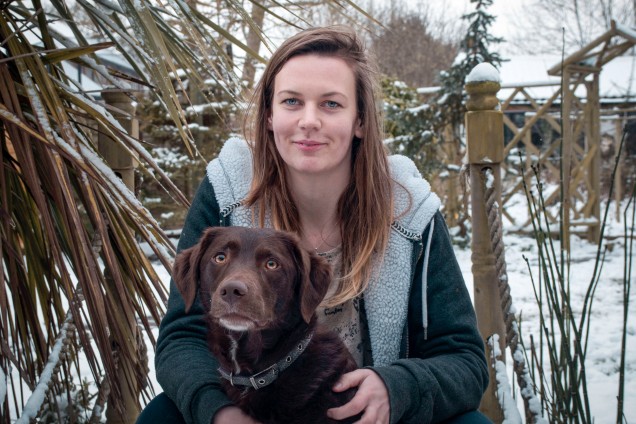
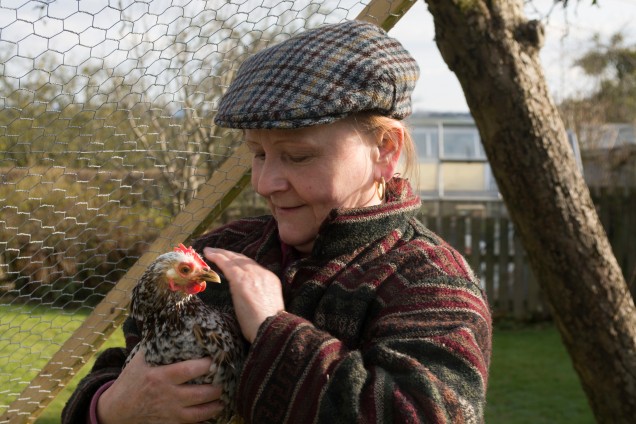
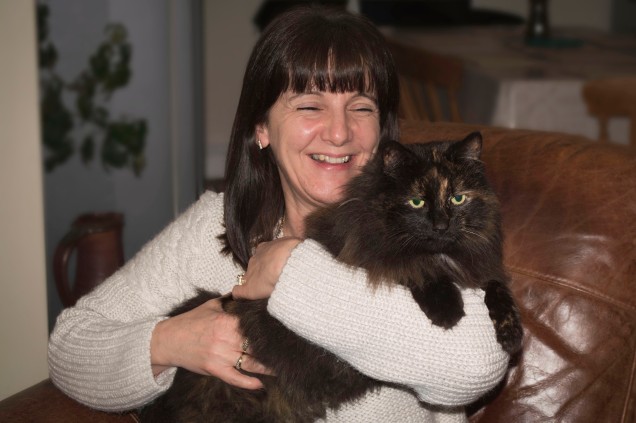
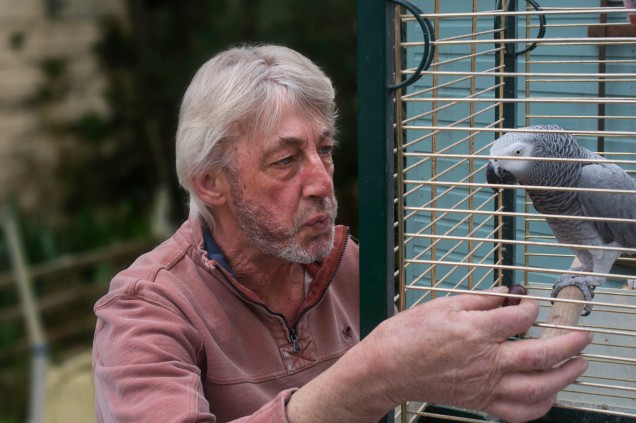
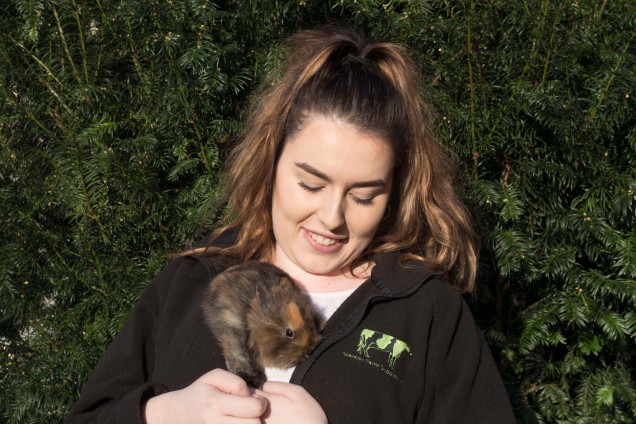
Assessment criteria
Demonstration of technical and visual skills
I think I did well with my demonstration of technical and visual skills because I didn’t merely take the portrait’s without considering the backgrounds first and that I took more than one photograph so as to explore different variations of the same portrait. My images are fairly consistent with their use of lighting and angle and focal distance etc which makes the images work well as a series – I can image them on the wall of a gallery. This is a difficult Assignment to self assess as I was trying my hardest to ascertain the best settings and camera angles and lighting etc for the images whilst under a lot of pressure socially (as was of course the aim of the assignment) so they may not be as good as they might have been had I known the subject well. Having said that I think in some ways I tried harder to make sure that I had at least three images on my viewfinder that I could work with when I got home so as not to be embarrassed later if the subject emailed me and asked for a copy and of course so that I wouldn’t need to ask for a re-shoot. I think that my visual skills are constantly improving as I tend to get better at considering the image in my viewfinder before pressing the shutter button instead of aimlessly shooting. I wanted the portraits to be intimate so even though it was awkward I tried to get as close as possible with the camera. I did find this easier than I had imagined it as the camera makes a sort of barrier between me and the subject. Considering the times of day, locations and natural/artificial light were all different I think I did well to keep all the images similar in lighting and colour. However if I was to do the same project again I would try to arrange the same time of day and keep them all outside instead of having one of the subject’s inside. I would also be more careful about measuring the distance between me and the subject so that all images in the series were a little more consistent in terms of intimacy.
Quality of outcome
I am very pleased with the results of this Assignment considering the doubt I had in myself at the beginning. At one point my only aim was to ‘just do’ the assignment no matter the results but once I had completed the first portrait I realised that I was definitely capable of much more than ‘just doing it’ and I put in a lot more planning and effort as I was then inspired and excited to continue the project. When I set out to do the project I thought I would want the images to be in black and white but I decided after the first two photographs that colour was an interesting factor in them – for example Hilary’s clothing and her chicken are almost identical in colouring which was fascinating to me and in my opinion makes the portrait more interesting to view. I have not yet had the images printed so will not send them for tutor feedback this time but will have them printed soon to check quality for eventual Assessment.
Demonstration of creativity
I think given my struggles with confidence for this Assignment that I still managed to draw upon my own creativity and personal voice to create an interesting theme instead of just relying on the common theme that all the subjects were unknown to me. I decided to use the subject and their animal to document the close relationships between owner and pet and hint at similarities between the two. I also directed the subjects around their own gardens and homes and spoke to them about themselves in order to arrange backgrounds which spoke something of their individual characters and/or that of their pets.
Context
I think that my research is a good start towards other practitioners in this area but needs to be extended. I am going to ask my tutor to point me in the direction of some further research in perhaps environmental portraiture or portraits with humans and animals so that I can study these areas further and this further research will be included in a revised edition.
Assignment One Research and Planning
Research and Planning for Assignment 1
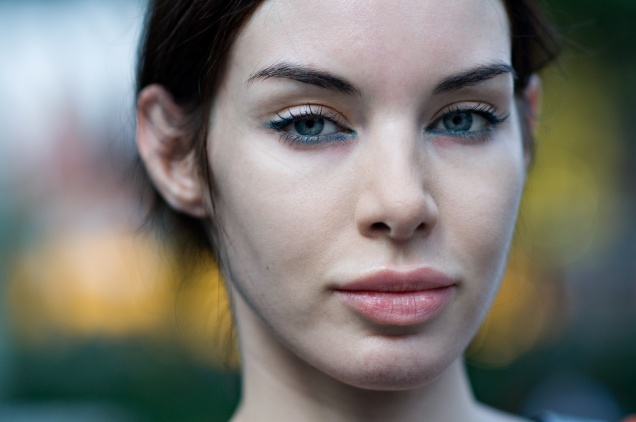
The work of Danny Santos, a portrait photographer from Singapore was very inspiring to me -in particular his two personal projects ‘Portraits of Strangers’ and ‘Portraits of Strangers after Dark’, the first using natural light and the latter artificial lights of the city. Being that I am so terrified of approaching people that I don’t know and asking them for their portrait I found these series really awe inspiring and viewing the extraordinary images helped to pull some excitement out of me for my own photography which always begins to counteract my fear – excitement trumps fear!
‘I wanted the viewers to see them how I saw them: as beautiful strangers.’ – Danny Santos on ‘Portraits of Strangers’
In this assignment I am encouraged to talk to the previously unknown subject and establish a bit of a dialogue with them before taking their photograph. Danny Santos does the opposite here – he simply approaches a stranger that he finds aesthetically pleasing/interesting and asks them for their portrait, if they say yes he takes the photo, thanks them and then walks away without obtaining any other information about them. The reasoning behind this is so that he can keep his strangers as just that – strangers! and therefore his viewers are viewing these faces in the same original way in which he saw them.
I’m not sure on the technical aspects of Danny Santos’ images, it looks as though he was quite close to the subject, used a wide lens and there is a shallow depth of field – how much of the backgrounds are post processed I’m not sure but the colours and tones are very similar in each background. The only differences in background seem to be that they change colour slightly depending on the skin tone of the subject – for example the women with the ginger hair has a warmer background than the greeny/bluey hues on most of the others. I really like the effect that the bokeh background in those shadowy or glowing hues has on the subject – its a cinematic type of effect and it adds something to the face -makes it more ethereal and points us to any unusual qualities – freckles, shiny hair, blue eye liner, the pores of the skin etc – there are no distractions in the back of the frame.
Next, because I was suffering from a lack of confidence when working towards assignment – everyone I asked either said ‘No’ or said ‘Yes’ but wanted to do it another time and then kept changing the date or making excuses, I read a few articles and watched a video on how to take photographs of strangers. The first article I viewed was by an aspiring photographer from Sandiego, California. Carlos Chavez is a self-described ‘shy introvert’ who decided that the next step for his photography was to learn how to approach people in the street and take their portrait.
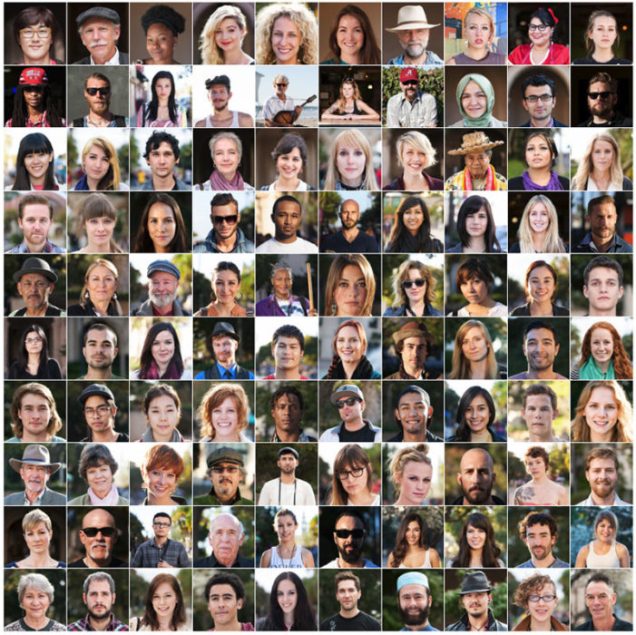
His project is entitled ‘100 Stranger Portraits’ and is a typology of 100 portraits of ‘people who said yes’. I found myself nodding along as I read the first few paragraphs as I can absolutely relate to his struggle to point a camera at a person. He writes “I couldn’t point my camera at people. It felt wrong, somehow, as though I hadn’t earned the right to photograph them because I wasn’t a good enough photographer” and this is exactly how I felt about approaching anyone at all, let alone a stranger! I kept saying to my partner that I wished this Assignment was the last Assignment of Identity and Place because at least then I would have some practice at portraiture (having done very little before), although I do now see that it is a good exercise to get me out of my comfort zone and to open up new avenues of possibility. Also, after I shot my first image for the Assignment I remembered what Carlos Chavez said about feeling elated afterwards and feeling a huge sense of accomplishment and satisfaction because this is exactly how I felt. Chavez also talked about a growing determination to finish the project “Once I started, I was determined to get all 100 strangers. I had to see this project through to the end.” This was also very true for me – as soon as I had one portrait under my belt I knew that I had to finish it – I was suddenly very driven towards my goal of five stranger portraits. It was useful to me to read of Carlos Chavez experiences as I was really doubting myself and thinking that I wouldn’t be able to do it because I am shy but actually he showed me that you don’t have to be extroverted or have any special ability to be able to ask , and take, portraits of strangers.
As a dog owner and an animal lover myself I naturally started to think about the possibility of adding a dog, or another pet, to the frame in order to relax the subject (because it means they are not the only one in the limelight), to relax myself (because animals usually have that effect) and to make the images more interesting (an interaction between the human subject and their pet). Although this Assignment is about photographing people who were previously unknown to me I decided that it should also have its own theme other than just ‘Unknown’. That’s when I decided to photograph people and their pets as a theme and perhaps look in to whether there were any similarities between them aesthetically. I then did some research in to similar projects that have been done for inspiration and ideas.

The first project I found was a series of diptychs of people and their dogs by photographer Ines Opifanti on Petapixel, where the first image in each pair is a portrait of a dog and the second image is the owner of their dog trying to pull the same expression and mimic the look of the dog in that portrait. The results are hilarious, intriguing and astonishing at times! Some of the people looked very very much like their dogs and others looked very funny as they tried to pull very dog-specific looks such as the happy open mouthed tongue out look! I like the simple background to the work, the bright green works well with the subjects highlighting their features well and the plain colour keeps the attention on the subjects for an easier comparison by the viewer. Also, the naked neckline of the human subjects is interesting as clothes would probably add a new dimension that dogs do not necessarily have, if they have a collar or other accessories it is because their owner has chosen it so it wouldn’t be a fair comparison if both were to be ‘clothed’. I think this nakedness brings the human subject to a more primitive position were she is closer to the animal and this adds to the diptych, giving it extra depth.
Another set of works I came across when searching for inspiration for this Assignment is the typologies of Steve Tyler, a recent BaHons Graduate from Nottingham Trent University. Tyler has am ongoing project consisting of several series of typologies that are categorised according to subject type. I feel really drawn to Tyler’s work because it is really minimalist and neat and the images fit well together, like objects placed neatly in a virtual drawer- there is something very satisfying about it. When placed in grids of nine evenly sized squares I find the images take on a catalogue quality as if I were viewing to buy. This amuses me as the subject might be stubbed out cigarette butts or used gum splodges on the pavement! Tyler’s work has inspired me not only for this Assignment by making me think about consistency but also in my personal archiving I have a desire now to try placing some of the same subjects together as series.
After having completed the exercise where I took a portrait of my father whilst paying special attention to the background I decided that my own Assignment might be more interesting if I considered the background of each shot as carefully as possible. As I don’t own a special lens that can keep only the subject in sharp focus and blur the background in to oblivion I knew that aspects of the background would almost certainly be in the frame and would need to be planned accordingly, therefore I decided to look further in to the genre of ‘Environmental Portrait’. Environmental Portrait is when a portrait photographer shoots the portrait in the sitter’s own environment such as their home/work or their favourite place and may include objects that say something about the sitters identity. One of the most famous photographers from this genre, and perhaps the very pioneer of this method of portraiture is Arnold Newman (1918-2006). Newman’s work is so inspiring to me as each portrait is gripping and intriguing and much can be learnt about the individual sitter by studying aspects of the frame. One of my favourite portraits taken by Newman is that of Egor Stravinsky with his piano. The frame is not a at all busy, with just the clean geometric shapes of the walls and the straight and curved edges of the grand piano, with Stravinsky himself in a very relaxed and casual position at the very far left of the frame. Environmental photography, it appears, does not have to include every aspect of the sitters life in one frame but just one int he case of Stravinsky at least. This image is aesthetically pleasing in its simplicity and geometric makeup but also perfectly reflects Stravinsky’s greatest passion and some of his character in the way he is positioned -how easy he is with his piano, as if they are great comrades (as of course they are!). I would like to include something in the background of my Assignment portraits that adds information on the sitter to the viewer, either as added objects or simply by taking the images in the subjects own home/garden/place of work or place they frequent often.
Please see Assignment 1 for finished Assignment shots and write-up.
References:
https://dannyst.format.com/portraits-of-strangers [accessed on 21/03/2018]
https://petapixel.com/2016/07/11/learned-shooting-100-stranger-portraits-shy-introvert/ [accessed on 21/03/2018]
https://petapixel.com/2015/08/26/portraits-of-people-looking-like-their-dogs/ [accessed on 21/03/2018]
http://cargocollective.com/stevetylerphotography/Typologies [accessed on 22/03/2018]
https://www.youtube.com/watch?v=9_EdCBhmBzc [accessed on 22/03/2018]